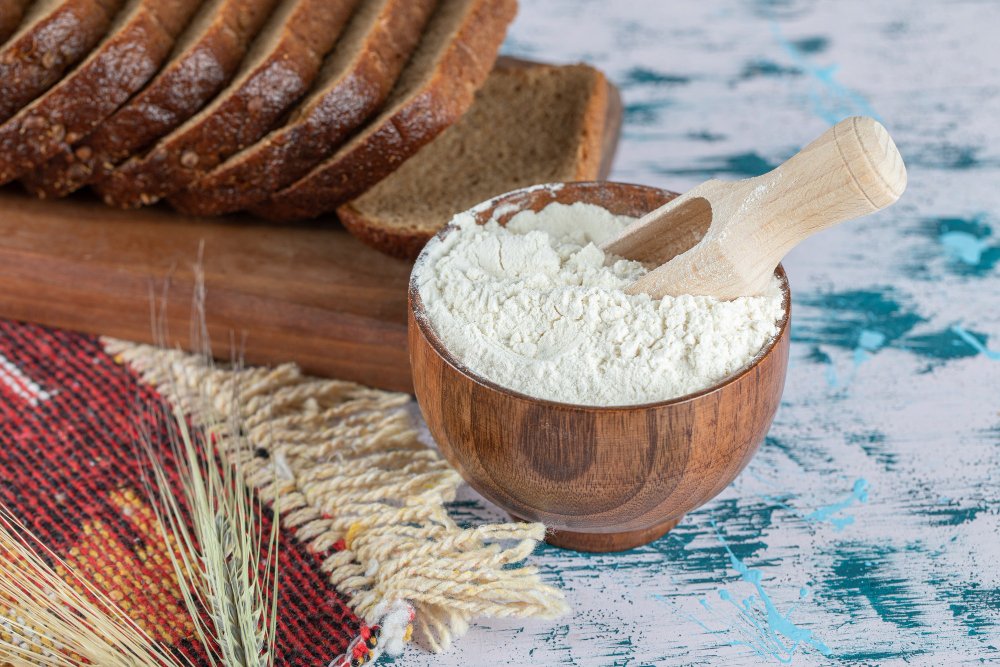The hallmark of exceptional, gourmet bread is a multi-sensory experience. It begins with the sharp crackle of a deeply caramelized crust yielding to a tender, open, and moist crumb. And finally, it’s the aroma and taste: a profound, lingering flavor that speaks of the grain itself. In professional kitchens and bakeries, the pursuit of this ideal is relentless. It involves mastering hydration, perfecting fermentation schedules, and honing shaping techniques. Yet, at the very heart of this endeavor lies the most fundamental choice of all: the flour type.
While countless variables shape the final loaf, the raw bread ingredients dictate the potential for flavor and texture. For professional bakers aiming to move beyond the homogenous character of standard bread and into the realm of true authenticity, the answer often lies in looking back—to flours that retain more of the whole grain. The question then becomes if the flour matters, which flour holds the key to unlocking this depth of character.
Understanding Flour: Beyond the Basics
To appreciate the impact of a specific flour type, it’s crucial to understand the language of milling, particularly the classification systems used to define a flour’s character. In many European traditions, especially the French system, flour isn’t just categorized by its protein content but by its ash content.
Ash content is a precise, scientific measure determined by incinerating a small, known weight of flour in a laboratory. The resulting mineral residue, or ash, is then weighed. This figure, expressed as a percentage, directly correlates to the amount of bran and germ that remains in the final flour. A lower ash content signifies a more refined flour, resulting in a whiter color and milder flavor. Conversely, a higher ash content indicates a flour with more of the mineral-rich bran and germ, leading to a darker color and a more robust, complex taste profile.
The French T-number system is a direct reflection of this ash content. A common all-purpose flour might be a Type 55 (T55), indicating approximately 0.55% ash content. As the number increases, so does the extraction rate and the mineral content. This system provides a clear, objective way for a professional baker to understand the potential flavor, nutritional value, and performance characteristics of the flour they are selecting. It’s a language that moves beyond vague terms like “bread flour” or “all-purpose” into a more precise and functional classification.
The Profile of French Type 150 Flour
At the higher end of this spectrum is the flour that has become synonymous with rustic, whole-grain baking: the French-style T150 flour. This designation signifies an ash content of around 1.50% or higher, making it a true whole wheat or near-whole wheat flour. Unlike some industrially produced whole wheat flours, where bran and germ are separated and later recombined, traditional stone-ground versions are milled to preserve the integral nature of the wheat kernel.
This high extraction rate endows the flour with distinct characteristics that translate directly to the finished loaf:
- Color and Aroma: The presence of bran particles gives the flour a darker, speckled, café-au-lait appearance. Its raw aroma is distinctly nutty, earthy, and sweet, a potent preview of the flavors it will impart to the bread.
- Flavor Profile: This is its most defining attribute. The bran and germ are where the wheat kernel’s oils and minerals are concentrated. These components contribute deep, complex flavors that are often described as nutty, slightly sweet, and earthy. It provides a flavor foundation that cannot be replicated with refined flours alone.
- Nutritional Value: The retention of the entire kernel means it is rich in fiber, vitamins, and minerals, adding a significant nutritional dimension to the final product.
The Impact on Dough and Fermentation
Working with a high-extraction flour requires a nuanced approach, as its behavior in the dough is markedly different from that of its refined counterparts. The sharp particles of bran can interfere with gluten development by severing the gluten strands, and the high fiber content leads to significantly higher hydration.
Professionals will find that hydration levels often need to be increased substantially to fully saturate the bran and achieve a pliable, extensible dough. An autolyse—a resting period after mixing just the flour and water—becomes not just beneficial but nearly essential. This allows the bran to soften and the flour to fully hydrate without the interference of salt or leavening, leading to improved gluten development during the final mix and a more manageable dough.
Furthermore, its rich mineral and nutrient content make it a powerhouse for fermentation. It provides an abundant food source for the wild yeasts and bacteria in a sourdough starter, promoting vigorous and complex fermentation. During long, slow fermentation, the enzymatic activity in the dough has more substrate to work with, breaking down complex carbohydrates and proteins into a wider array of flavorful organic acids, alcohols, and esters. This synergy between the flour and the fermentation process is what builds the layered, tangy, and deeply aromatic character of a world-class rustic loaf.
Final Thoughts: T150 Flour and Gourmet Breads
So, is it the singular key to authentic rustic bread flavor? In an art form with so many variables, no single element can be the sole key. The skill of the baker, the vitality of the starter, the precision of the fermentation, and the mastery of the bake are all indispensable.
However, the choice of flour is the foundation upon which all else is built. It sets the ceiling for potential flavor. While a skilled baker can craft a good loaf from standard flour, they can only create a truly exceptional, deeply flavorful gourmet loaf when the raw ingredients themselves possess that inherent character.
In this context, T150 flourishes undeniably as a cornerstone. It is not merely an ingredient but an intentional choice to prioritize flavor, aroma, and texture from the very beginning. For the culinary professional dedicated to crafting bread with soul and a distinct sense of place, embracing these potent, flavorful flours is not just a technique—it’s a philosophy.

